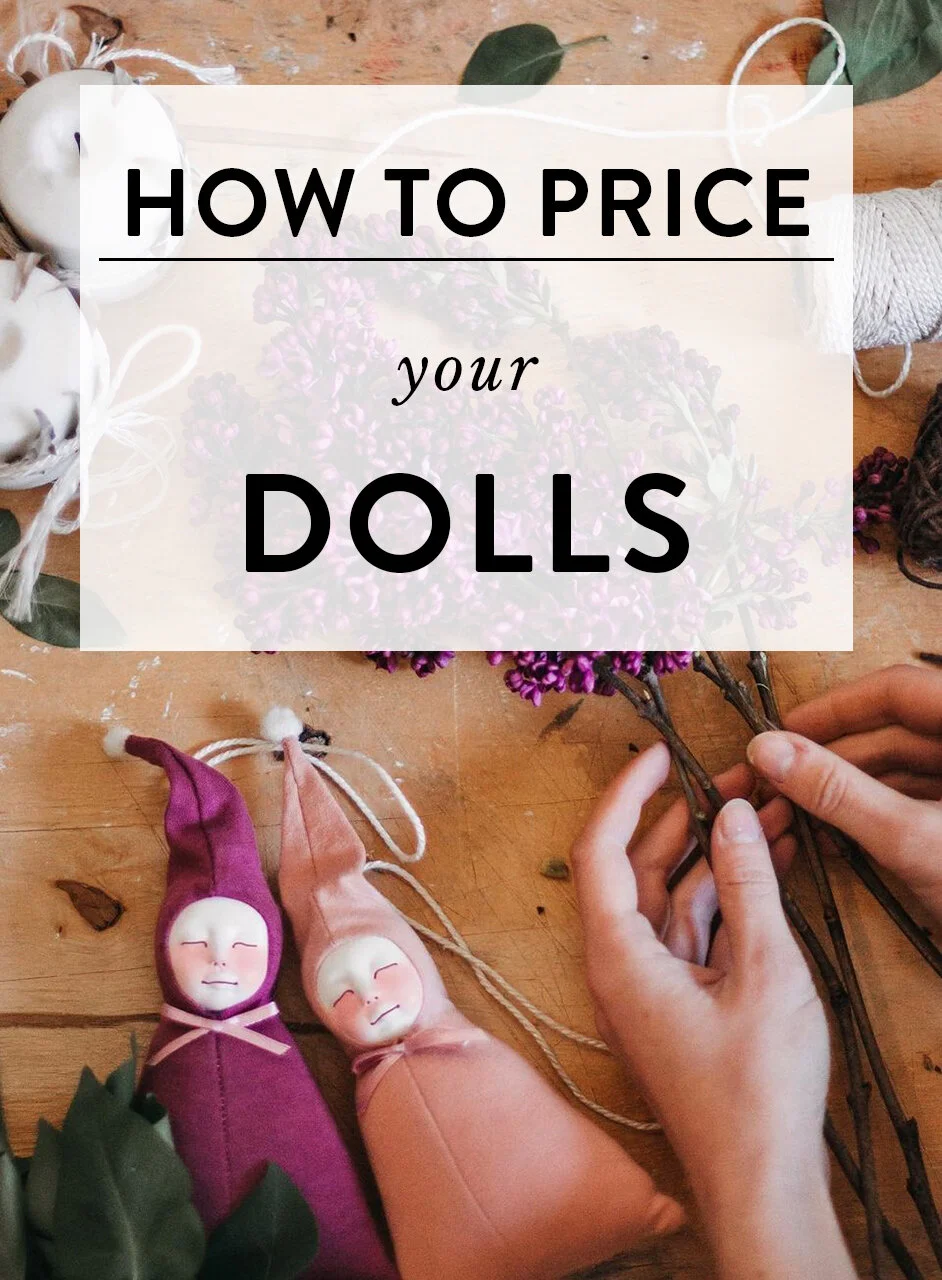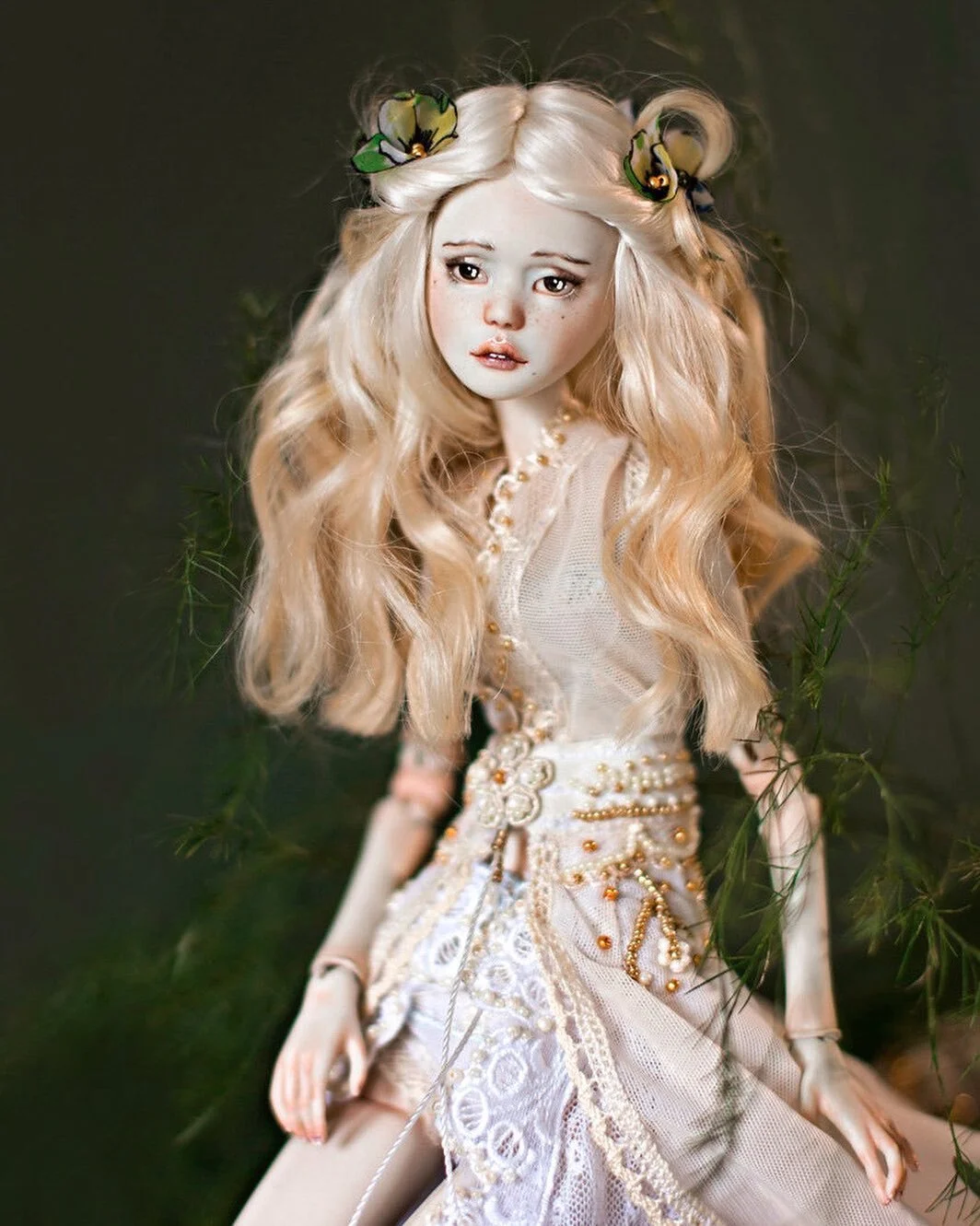How to price your dolls?
Most artists have trouble pricing their work, especially at the beginning. Doll makers are not an exception. I had so many requests for this article! So here I am, prepared for a task, ready to help out and give some advice.
This post contains affiliate links and I will be compensated if you make a purchase after clicking on my links. I wouldn’t promote anything I don’t absolutely love!
Pricing formulas
You can’t always depend on pricing formulas, but we’ll look at some for reference.
(Hourly Wage × Hours Spent) + Cost of Materials
(Hourly Wage × Hours Spent) + Profit Margin
This one is the most popular but doesn’t work for all artworks. Let’s analyze it with examples. I use this one for my plush dolls. They don’t take me very long to do, and I buy materials in bulk, so the cost of making one is small. I chose 12 euros (about $14.13) as my hourly wage, larger than the average where I live, but lower than in the U.S. or western Europe. Here is how it translates to my plush dolls:
This cute lamb takes me about two hours to complete. The cost of materials is less than 5 euros since I buy in bulk and make a lot of the same dolls. The prices in my Etsy shop include shipping costs as well.
Using this formula (Hourly Wage × Hours Spent) + Cost of Materials it works like this:
(12€ x 2 hours) + 5€ = 29€
29€ + Shipping (6€) = 35€
This formula translates well for most artworks, but some dolls can take months to finish. That’s why I won’t use it for my porcelain dolls. The price would get so astronomical, I wouldn’t be able to find a collector willing to pay that. To figure this out, early in my career, I watched some of Megan Auman’s classes. It taught me of a Bread + Butter concept, which I’ll try to explain.
Bread + Butter concept
This part is from Megan Auman’s classes and helped me to figure out pricing. Your Bread + Butter line is a collection of artworks or other goods that is easy to make, sells good and gives you a steady income. For me, it’s my plush dolls and online classes. I use the formulas I mentioned before to price them. The prices are quite affordable, attracts customers, and I don’t undersell myself. It’s literally my bread and butter! With this concept, I get a steady income, so I can make more elaborate one-of-a-kind porcelain dolls that have a low-profit margin but brings me fulfilment.
How to price elaborate artworks that take hours to make?
Since pricing formulas don’t really work here unless you’re a famous artist, here’s what I do:
Research prices of similar artists
This helps me a lot to determine how the market looks like and what I can expect pricing wise. For dolls, research Etsy, eBay and specific artists you follow on Instagram. Prices will likely range from very low to incredibly high, but you probably can place yourself somewhere in the middle and see how it goes from there.
Roughly estimate hours + cost of materials
Porcelain dolls are very time consuming, so I don’t track every hour I spend making them. On average, it takes me about 200 hours to complete a doll. The cost of materials can be up to 100 euros. So using the formula (Hourly Wage × Hours Spent) + Cost of Materials my porcelain doll should cost about 2500 euros. Since I’m quite new at this scene, my name is not very known. I’m still learning new techniques, so selling for this price would be difficult. And honestly, I wouldn't be very comfortable until I establish my brand. For that reason, the cost for my porcelain dolls ranges from 1200€ to 1600€. While researching similar artists, I found that many of them value porcelain dolls in a similar range.
What else to know?
Have confidence in your prices
As an artist, it’s easy to undersell yourself. But think how much love and time you put into your work. Be confident and don’t give in if someone is begging for a huge discount.
Raise the prices as you grow
Think about it as a raise. In a conventional job, people will get a raise as they grow and bring more value to the company. The same is with artists. They learn and get better at what they do, and they deserve to be paid accordingly.
Analyze how your artwork sells
Over the years you can see what’s popular among your audience. What requires more work than you anticipated. Adjust your prices consequently, maybe if demand is too high it’s time to raise your prices?
I hope these insights helped you to get a picture of how to price your dolls. There’s no one good answer just guidelines that you can tweak as you like. Just be fair and don’t undersell yourself! Let me know in the comments what are your strategies.





